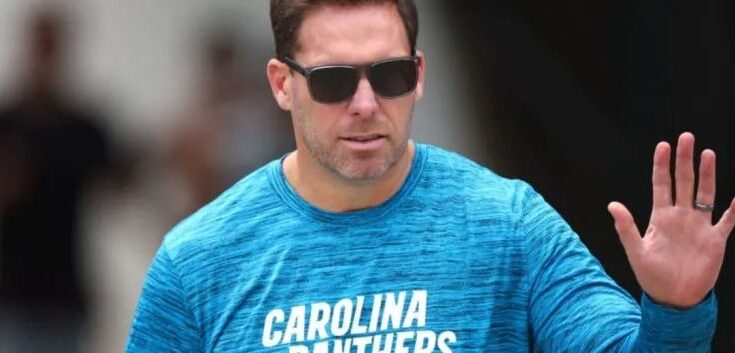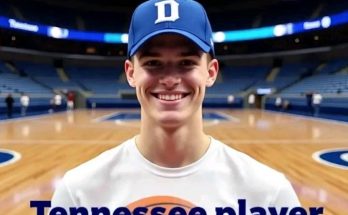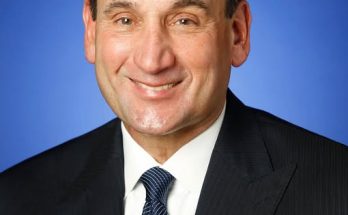The Carolina Panthers, a franchise in a perpetual state of rebuilding and retooling, face a critical juncture as the 2025 NFL season approaches. According to their June 1 salary cap space report, the team has approximately $17.2 million in effective cap space (Over The Cap reports $17,239,531, while Spotrac reports $20,094,052 as Top 51 cap space). This figure, a slight decrease from earlier projections, dictates the team’s flexibility in making significant moves, such as acquiring a high-priced defensive star.
The actual NFL salary cap for 2025 has been set at $279.2 million, a significant increase from previous years. While this higher cap benefits all teams, the Panthers’ current financial standing means they are not among the league leaders in available space. They sit somewhere in the bottom half of the league in terms of immediate flexibility.
It’s crucial to understand what “effective cap space” means. This isn’t just the raw cap space a team has. It takes into account the money needed to sign the incoming rookie draft class and fill out the 51-man roster (the NFL only counts the top 51 highest salaries against the cap during the offseason). So, while the Panthers might appear to have a certain amount of total cap space, the effective cap space is the more realistic figure for what they can actually spend on new talent.
The Panthers have already committed significant resources to key players, particularly on the offensive line and defensive interior:
- Taylor Moton (RT): The highest cap hit on the team for 2025 at $31.35 million. He’s entering the final year of his current contract, and while he recently expressed a desire to sign another deal and stay with the Panthers, his current cap number severely limits immediate flexibility. Restructuring his deal or extending him could potentially free up significant cap space (reportedly around $13 million by restructuring or extending).
- Robert Hunt (G): Signed a big free-agent deal this offseason, carrying a $21.65 million cap hit in 2025.
- Derrick Brown (DT): Recently extended, Brown carries an $18.74 million cap hit. He’s a foundational piece of the defense, and a potential restructure of his deal could free up around $9.39 million.
- Damien Lewis (G): Another significant free agent addition, with a $14.57 million cap hit.
- Bryce Young (QB): Still on his rookie deal, Young’s cap hit is a relatively modest $10.35 million, which is a significant advantage for the Panthers in terms of roster building.
These substantial contracts, particularly those on the offensive line, consume a large portion of the available cap, making any additional high-priced acquisitions challenging without further maneuvers.
The rumor of the Panthers targeting Trey Hendrickson, the Cincinnati Bengals’ star edge rusher who led the NFL in sacks in 2024, is exciting for fans. Hendrickson’s current contract details are critical here:
- He signed a 1-year, $21 million extension with the Bengals in 2023.
- In 2025, he is set to earn a base salary of $15.8 million, with a cap hit of $18.67 million and a dead cap value of $2.67 million.
- He is entering the final year of his contract and is looking for long-term security, reportedly turning down a $28 million per year offer from the Bengals.
If the Panthers were to acquire Hendrickson via trade, they would likely inherit his $18.67 million cap hit for 2025, or work out a new long-term extension immediately that would lower his first-year cap hit while providing him the long-term security he desires.
Given their effective cap space of approximately $17.2 million, the Panthers cannot simply absorb Hendrickson’s reported $21 million average annual value (AAV) without making significant roster adjustments. To do so, they would need to:
- Restructure Existing Contracts: The most likely avenue would be to restructure the contracts of players like Taylor Moton or Derrick Brown. As noted, a Moton restructure could free up around $13 million, and a Brown restructure could add another $9.39 million. These moves would create enough space to fit Hendrickson’s $18.67 million cap hit for 2025, and potentially even sign him to a new long-term deal that spreads out the cap impact.
- Cut or Trade Other Players: While less desirable, the Panthers could also create space by cutting or trading other veterans. However, most of their major cap liabilities are tied to players they just signed or extended, making this less feasible. For instance, trading Miles Sanders would save $6.7 million, but he’s already a high-cost player with significant dead money implications.
- Roll Over Unused Cap Space from 2024: Any unused cap space from the 2024 season would have rolled over to 2025, adding to their current total. This is already factored into the reported effective cap space.
Even if the Panthers can financially engineer a move for Hendrickson, the strategic wisdom of doing so for a team still undergoing a rebuild is debatable.
-
- Immediate Impact: Hendrickson is a proven, elite pass rusher who would instantly upgrade the Panthers’ weakest defensive position. He led the NFL in sacks, providing a game-changing presence.
- Complements Derrick Brown: A dominant edge rusher would significantly enhance the effectiveness of Derrick Brown, who is an interior force. This tandem could finally create consistent pressure.
- Mentorship: His veteran presence would be invaluable for young edge rushers like Nic Scourton and Princely Umanmielen, drafted in 2025.
- Sends a Message: It shows a commitment to winning and providing Bryce Young with a competitive defense.
- Age and Longevity: Hendrickson turned 30 in late 2024. A $21 million AAV contract typically implies a multi-year commitment, and there’s a risk of decline in performance or increased injury concerns as he enters his early to mid-30s. This is a significant investment for a player potentially on the downward slope of his career.
- Opportunity Cost: That $21 million AAV could be used to address multiple other roster needs (e.g., another playmaking wide receiver to support Bryce Young, or depth in the secondary which lacks consistent talent beyond Jaycee Horn). A single, large contract might prevent the team from building a more balanced roster.
- Draft Capital: Acquiring Hendrickson via trade would likely cost valuable draft picks, which are crucial for a rebuilding team.
- Still Not a Contender? While Hendrickson significantly improves the defense, the Panthers still have other areas that need strengthening (wide receiver depth, consistent offensive line play outside of a few stars, overall defensive depth). A single player, no matter how elite, may not be enough to turn them into a playoff team, let alone a contender.
The Carolina Panthers’ effective cap space of just under $18.7 million on June 1 means that acquiring Trey Hendrickson at his reported $21 million AAV would necessitate significant additional cap maneuvers, primarily contract restructures. While financially possible through such means, the decision carries substantial strategic implications.
For a team desperate for a spark and a definitive move to build around Bryce Young, adding an elite, game-changing pass rusher like Hendrickson offers immediate hope and a clear upgrade. He directly addresses a glaring weakness and could elevate the entire defense.
However, the significant financial commitment to a player entering his 30s, coupled with the opportunity cost of what that money could buy elsewhere on the roster, presents a genuine dilemma for General Manager Dan Morgan. The Panthers must weigh the immediate impact and the “win-now” message against the long-term cap health and the holistic development of a truly competitive roster.
It’s a bold move, indeed. If executed, it would signal a clear intent to accelerate the rebuild. But only time will tell if a $21 million investment in one defensive star is the truly “worth it” for a franchise that has yearned for consistent success for so long.



